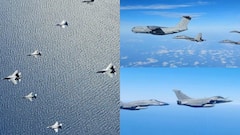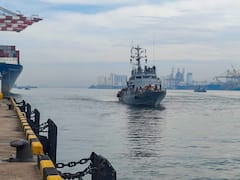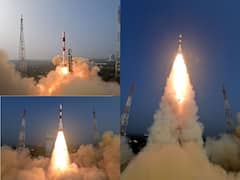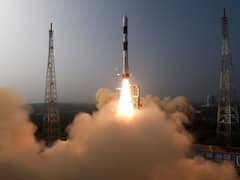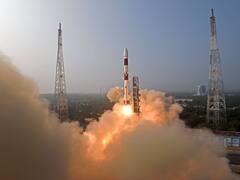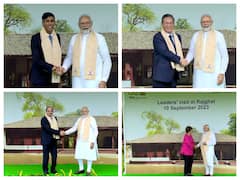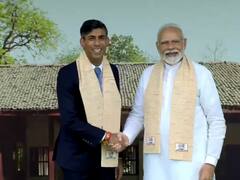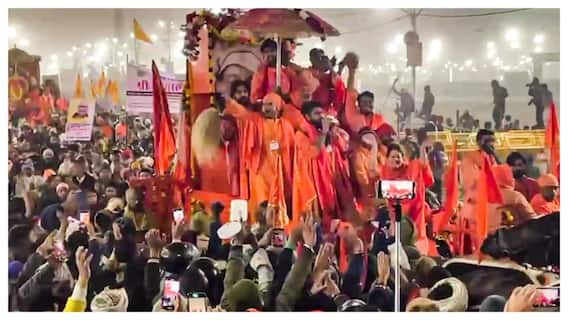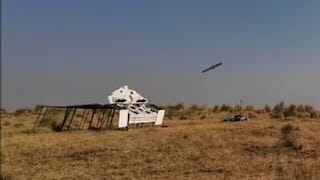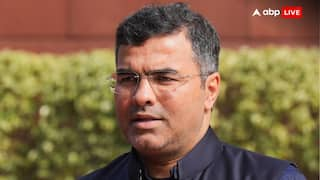Explorer
Early Satellites To Moon Missions: ISRO Milestones Since Independence. In PICS
Earliest satellites to Moon missions: In the years since Independence, India has made major strides in its space programme, spearheaded by the Indian Space Research Organisation (ISRO).
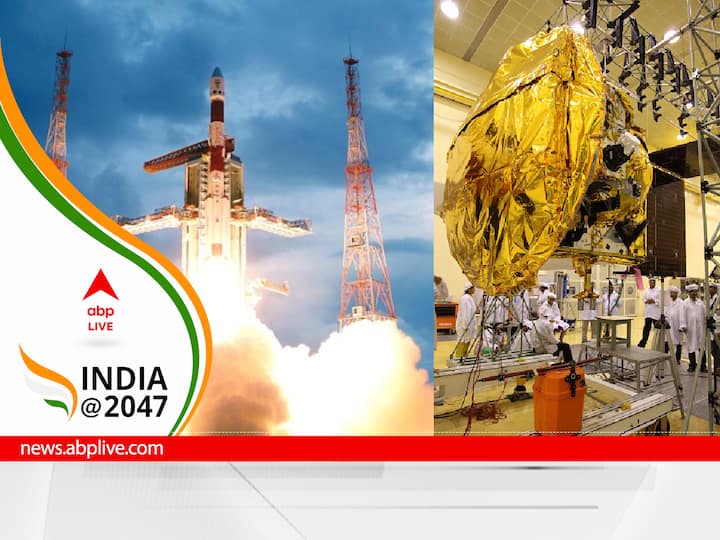
The feats achieved by ISRO include the Rohini Series, INSAT and GSAT Series, EDUSAT, Earth Observation Satellites, Indian Regional Navigation Satellite System, Space Recovery Experiment Satellite, Chandrayaan-1, Mars Orbiter Mission (MOM), AstroSat, and Chandrayaan-2.
1/27
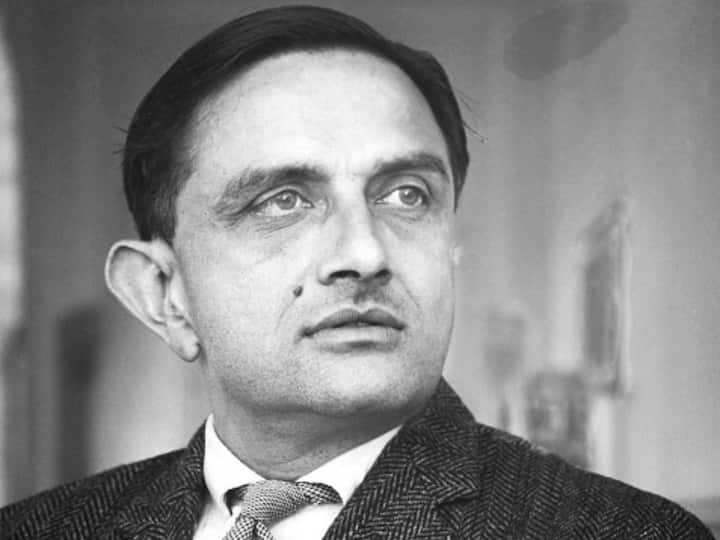
Vikram Sarabhai, internationally regarded as the Father of the Indian Space Programme, was an Indian physicist and industrialist who initiated space research, and helped develop nuclear power in India. Sarabhai was the founder of the Indian Space Research Organisation (ISRO). (Image source: Getty)
2/27
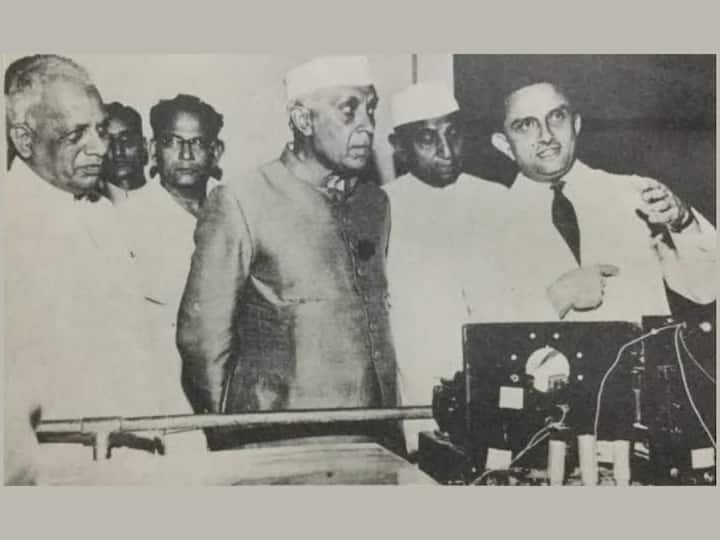
Space research activities were initiated in India during the early 1960s. In 1962, the Indian National Committee for Space Research (INCOSPAR) was set up under the Department of Atomic Energy, to spearhead space research activities. The then Prime Minister of India, Jawaharlal Nehru, set up INCOSPAR on the urging of Vikram Sarabhai. (Image: @INCIndia)
3/27
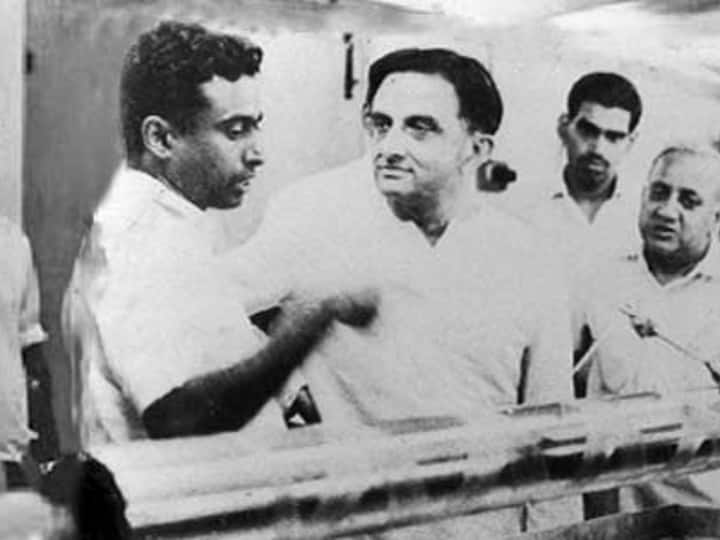
The American satellite 'Syncom-3' conducted live transmission of the 1964 Tokyo Olympics, demonstrating the power of communication satellites. Seeing this, Vikram Sarabhai recognised the benefits of space technologies for India. This image is from the early stages of the Indian Space Programme. (Image: ISRO)
4/27

In August 1969, ISRO was established in place of INCOSPAR. In the initial stages, St Mary Magdalene Church (in image) in the fishing village of Thumba in Thiruvananthapuram, Kerala, served as the main office for scientists. (Image: ISRO)
5/27
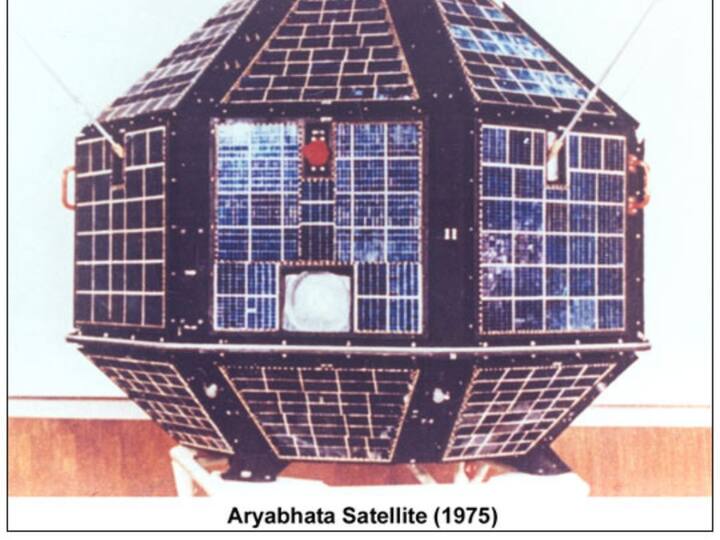
The Indian space programme had three distinct elements — satellites for communication and remote sensing, the space transportation system, and application programmes. The satellite programme began on April 19, 1975, with the launch of India's first experimental satellite Aryabhatta. Launched using a Soviet launcher, Aryabhatta was placed in low-Earth orbit. (Image: UR Rao Satellite Centre)
6/27
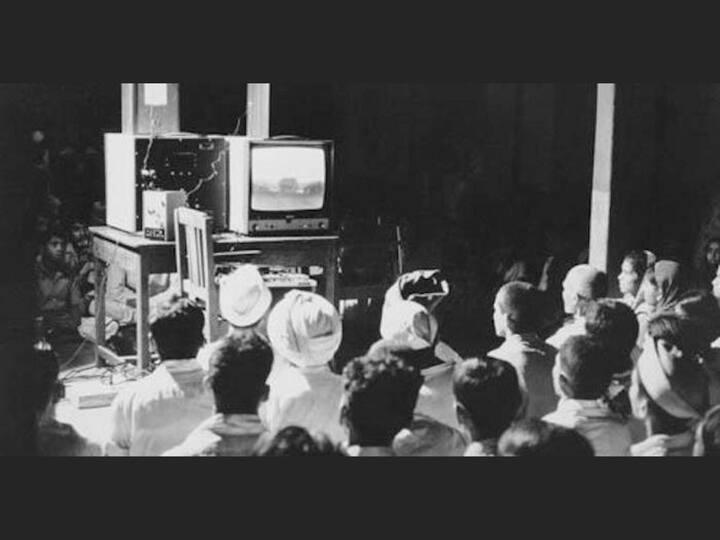
During 1975-1976, an experiment called the Satellite Instructional Television Experiment (SITE) was conducted under the Indian space programme. SITE benefitted around 200,000 people, covering 2,400 villages of six states and transmitted development-oriented programmes using the American Technology Satellite (ATS-6). This is an image of people watching television under SITE. (Image: Twitter/IndiaHistorypic)
7/27
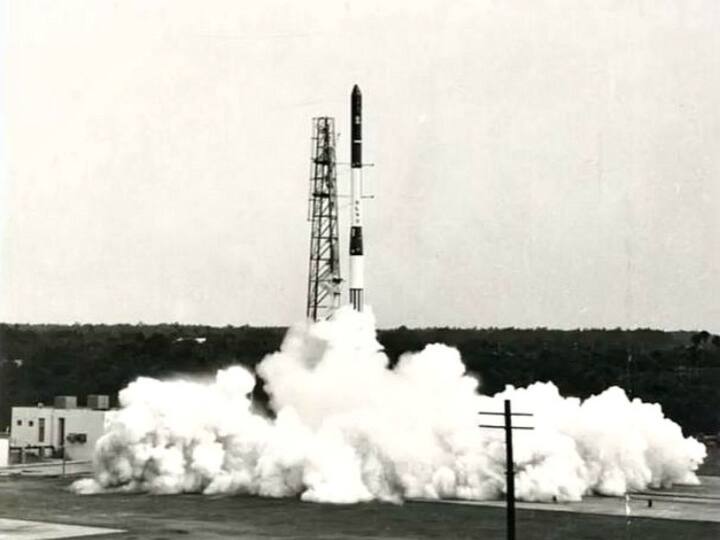
ISRO launched the maiden flight of its first experimental satellite launch vehicle, the Satellite Launch Vehicle-3 (SLV-3), on August 10, 1979. SLV-3 E1, the first experimental flight of the satellite launch vehicle, was launched from SLV Launch Pad in Satish Dhawan Space Centre, Sriharikota. The launch vehicle was carrying the Rohini Technology Payload, which weighed 35 kilograms. However, the mission was a partial success because a faulty valve caused the launch vehicle to crash into the Bay of Bengal 317 seconds after launch. (Image: Twitter/@ISRO)
8/27
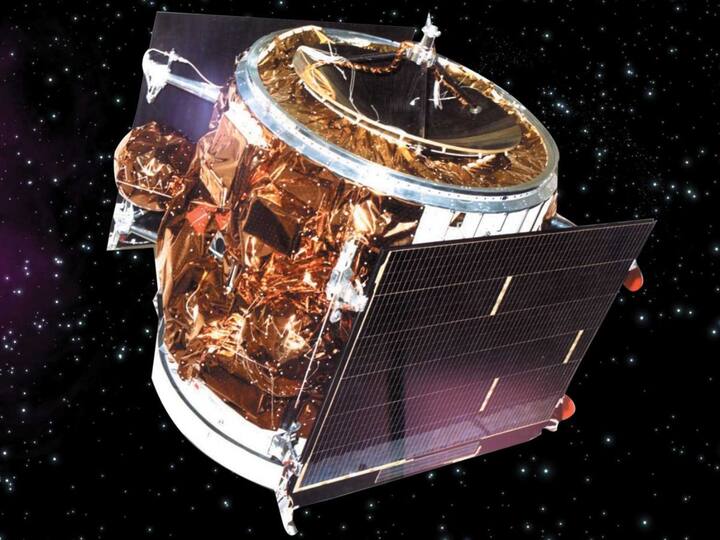
Based on the lessons learnt from SITE, ISRO launched its first dedicated communication satellite, the Ariane Passenger Payload Experiment (APPLE). (Image: ISRO)
9/27
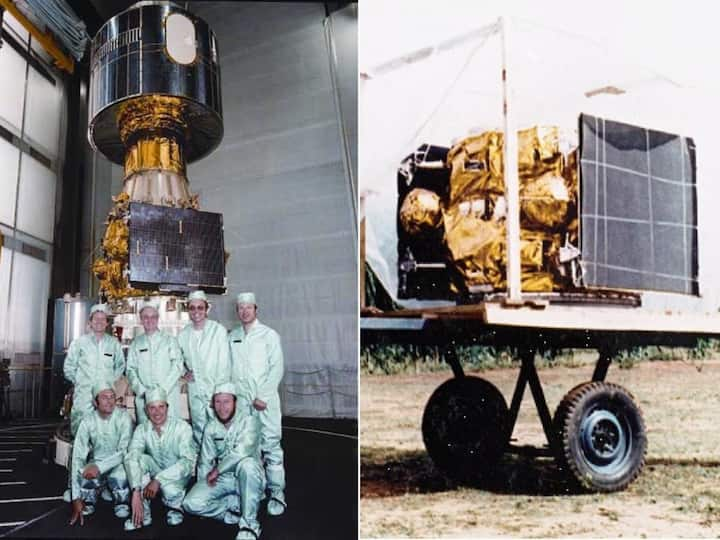
Ariane personnel in front of the APPLE Satellite (left) (Image: Ariane Space); APPLE being tested on a bullock cart (right) (Image: ISRO). APPLE was an experimental satellite successfully launched by Ariane-1, from Kourou, French Guiana, on June 19, 1981. APPLE became the forerunner for future communication satellite systems.
10/27
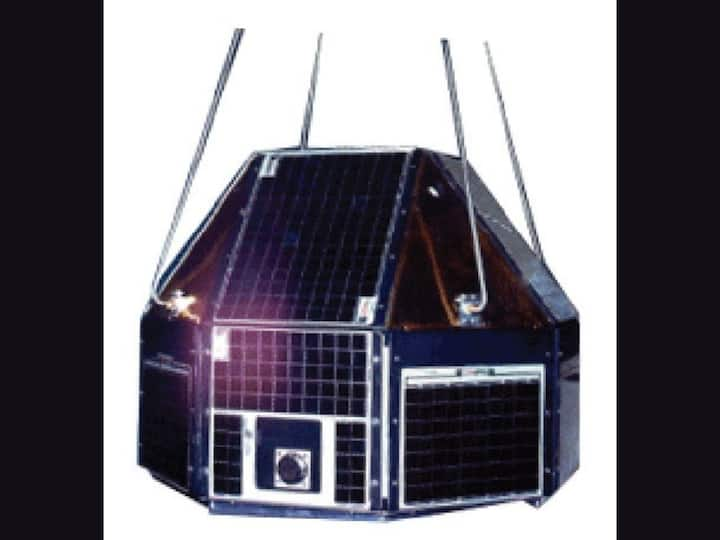
One of ISRO’s feats is the launch of the Rohini Series of satellites, which carried launch vehicle monitoring instruments. Rohini Satellite RS-1 was an experimental satellite launched aboard Satellite Launch Vehicle-3 (SLV-3) by ISRO on July 18, 1980. RS-1, which weighed 35 kilograms, was placed into orbit, and had an orbital life of nine months. It had a power handling capacity of 16 Watts. RS-1 carried digital sun sensors, a magnetometer, and temperature sensors, and became the first satellite of India to be launched by an SLV-3. (Image: ISRO)
11/27

The Indian National Satellite (INSAT) system was established in 1983, with the commissioning of INSAT-B. The INSAT series initiated a major revolution in India's communication sector. INSAT-2A is the first multipurpose satellite built by ISRO. It was successfully operationalised in August 1992. The satellite boosted the telephony and television applications in India, and drastically changed the telecommunications sector. INSAT-2A also provided meteorology services, and aided in search and rescue operations. (Image: ISRO)
12/27

The INSAT system was followed by the GSAT series. GSATs have served as multipurpose geostationary satellite systems providing S band, Ku-band, and Ka-band transponders for high power television broadcast and telecommunications, mobile satellite services, and Direct-To-Home services. The GSAT satellite series have also proved helpful during search and rescue operations. The GSAT-1 satellite was launched on April 18, 2001 by Geosynchronous Satellite Launch Vehicle-D1. It was the first geostationary satellite to be launched using the GSLV. (Image: ISRO)
13/27

EDUSAT, or GSAT-3, is the first geostationary satellite with dedicated application in the field of education. It drastically improved several government schools by introducing distance learning and tele-education. The "educational satellite" was launched on September 20, 2004, atop the GSLV-F01, from Satish Dhawan Space Centre. (Image: ISRO)
14/27
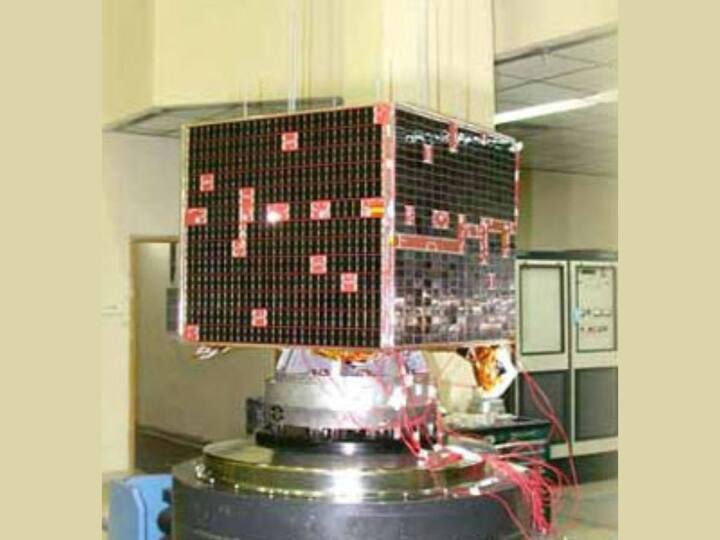
HAMSAT was launched on May 5, 2005, using the launch vehicle PSLV-C6, as a micro-satellite for providing satellite-based amateur radio services to the national and international community of amateur radio operators (HAM). These are individuals who typically use equipment at an amateur radio station to engage in two-way personal communications with other similar individuals. (Image: ISRO via Gunter’s Space Page)
15/27
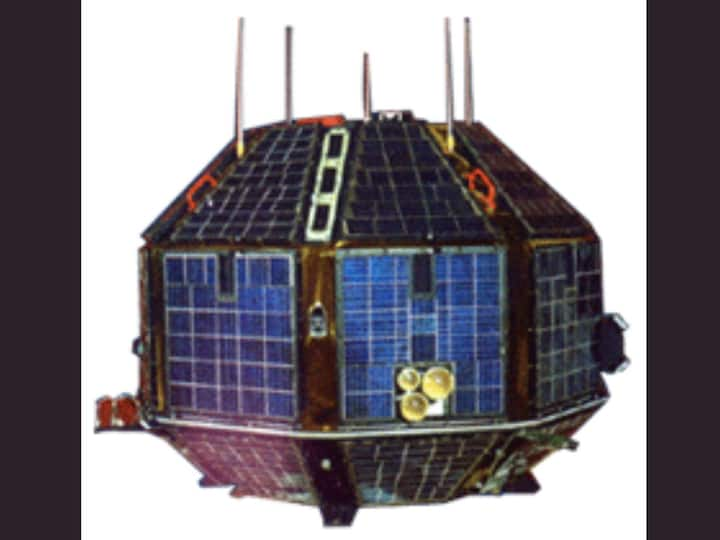
Bhaskara-1 was the first operational remote sensing satellite launched by ISRO. It carried a television camera with one kilometre-resolution and a satellite microwave radiometer (SAMIR), which was utilised in environmental applications such as weather forecasting and climate monitoring. SAMIR provided data on water vapour and liquid water content on a global scale. It had a resolution of 150 to 200 kilometres. The satellite was launched on June 7, 1979. (Image: ISRO)
16/27
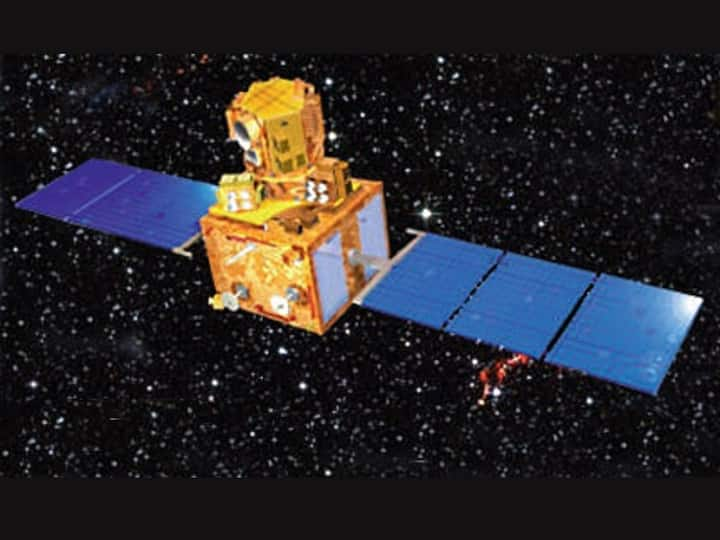
The Resourcesat series is providing useful data for applications in agriculture, forestry, land mapping, urban planning, disaster management, among others. Resourcesat-1, an advanced remote sensing satellite, was launched on October 17, 2003. (Image: ISRO via ESA)
17/27
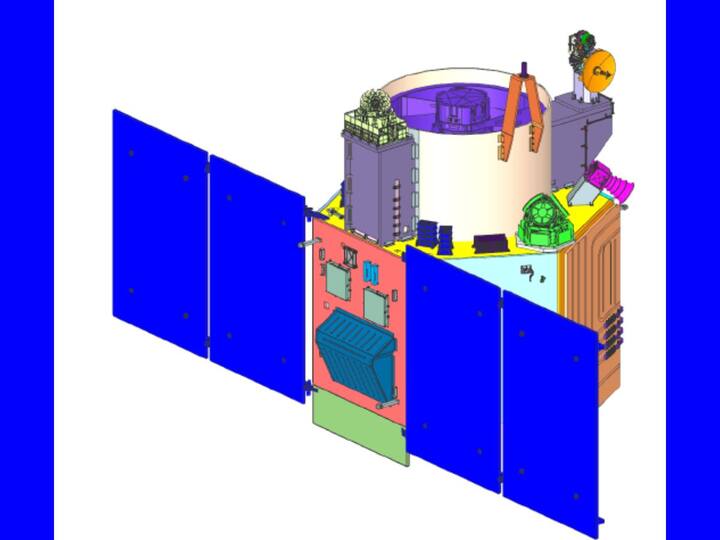
The Cartosat series significantly helped remote sensing and geographic information system (GIS) applications. According to ISRO, the era of very high-resolution optical imaging started with the launch of Cartosat-2, on January 10, 2007. (Image: ISRO)
18/27
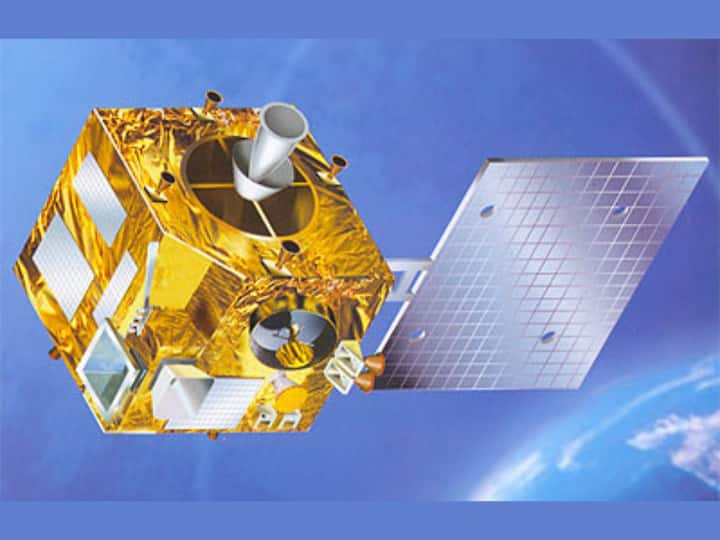
Kalpana-1 is the first in the series of exclusive meteorological satellites built by ISRO. It was launched on September 12, 2002. It carried two payloads: Very High Resolution Radiometer (VHRR) and Data Relay Transponder (DRT). VHRR was designed to obtain atmospheric cloud cover, water vapour, and temperature data. (ISRO via Gunter’s Space Page)
19/27
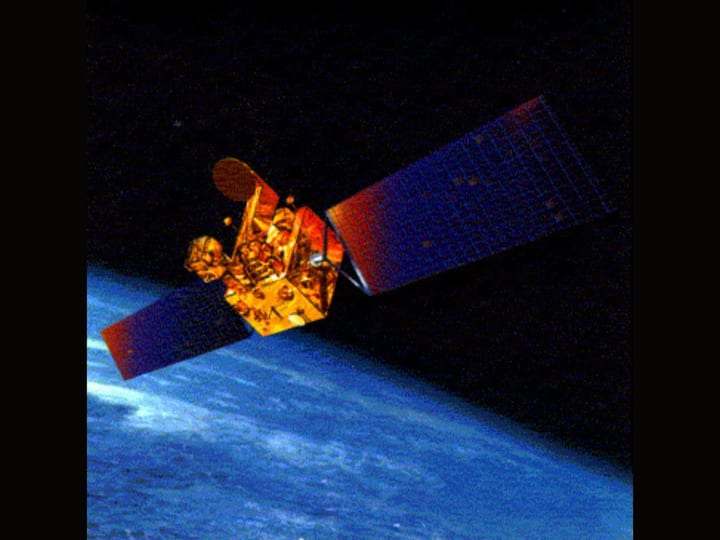
Oceansat-1 marked the beginning of space-based observations for oceanographic applications for ISRO. It was launched on May 26, 1999. It carried an eight-channel Ocean Colour Monitor (OCM) and a Multi-frequency scanning microwave radiometer (MSMR). Oceansat-1 was followed by Oceansat-2, which provided vital inputs for weather forecasting, and cyclone tracking and prediction. (Image: IOCCG)
20/27
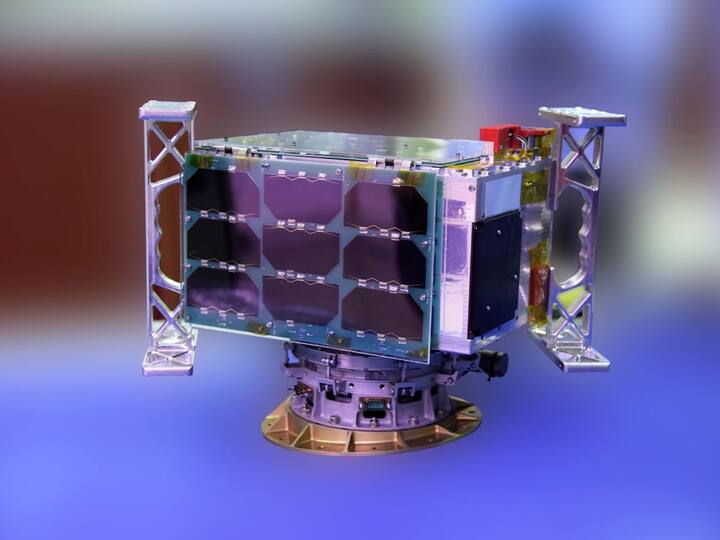
An important milestone achieved by the ISRO is the launch of Earth Observation Satellites. Earth Observation Satellite (EOS)-04 (in image) is a radar imaging satellite designed to provide high quality images under all weather conditions and to facilitate applications such as agriculture, forestry, plantations, soil moisture, hydrology, and flood mapping. It was launched on February 14, 2022. (Image: ISRO)
21/27
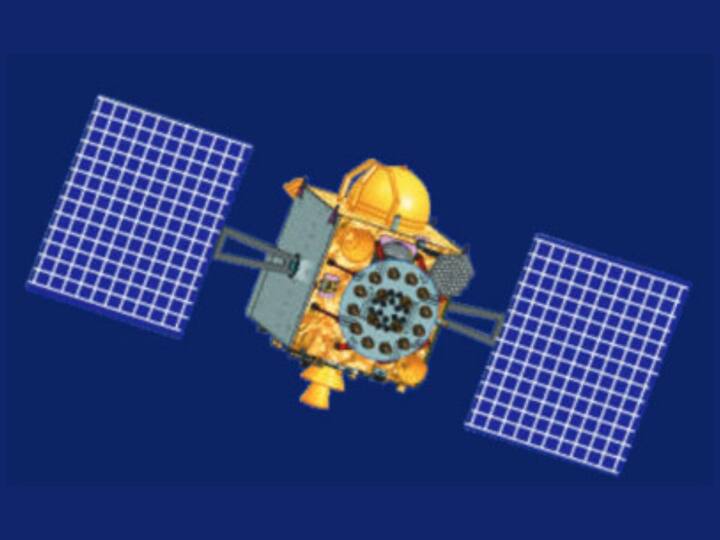
Indian Regional Navigation Satellite System (IRNSS), also known as NavIC, is an independent regional navigation satellite system that provides accurate real-time positioning and timing services to users in the country as well as the region extending up to 1500 kilometres from its boundary. NavIC is the acronym for Navigation with Indian Constellation. IRNSS provides two types of services, namely Standard Positioning Service (SPS), which is provided to all users, and Restricted Service (RS), which is an encrypted service provided only to authorised users. Currently, the Indian Constellation is being extended to 11 satellites. (Image: ISRO)
22/27
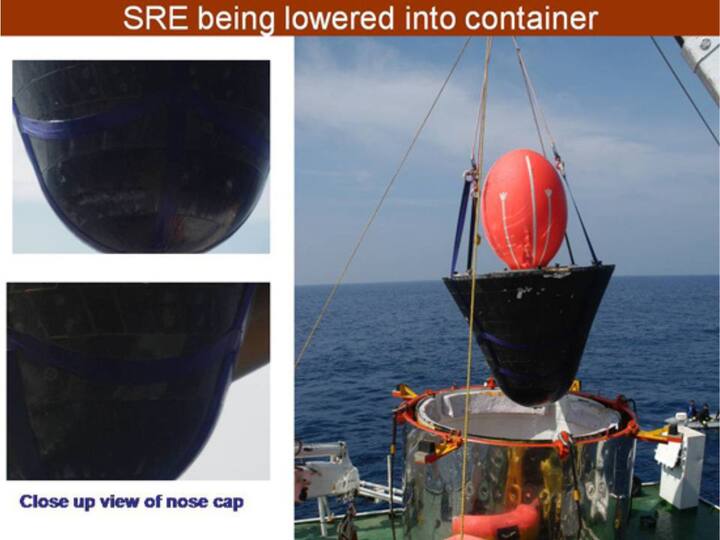
Space Recovery Experiment Satellite (SRE) was the first step towards preparation for human spaceflight missions. SRE-1 was an Indian experimental spacecraft launched on January 10, 2007, from Sriharikota. (Image: VSSC)
23/27
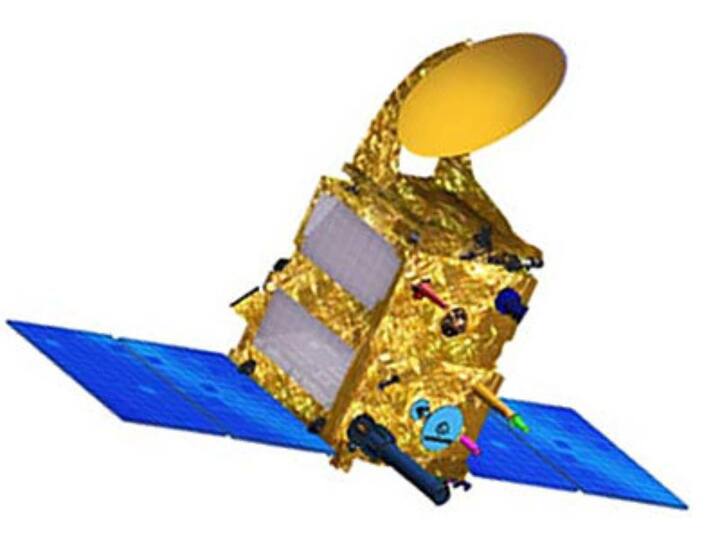
SARAL was launched on February 25, 2013 for oceanographic studies. It carried two payloads built by the Paris based-National Centre for Space Studies (CNES), namely ALTIKA and AGROS. The applications included marine meteorology, sea state forecasting, operational oceanography, seasonal forecasting, climate monitoring, and climate research. (Image: ISRO)
24/27

The Chandrayaan missions are a series of lunar space probes. Chandrayaan-1 operated in 2008-09. It mapped the Moon in various wavelengths of light from lunar orbit. Chandrayaan-1 was launched aboard the Polar Satellite Launch Vehicle (PSLV) on October 22, 2008. (Image: ISRO)
25/27
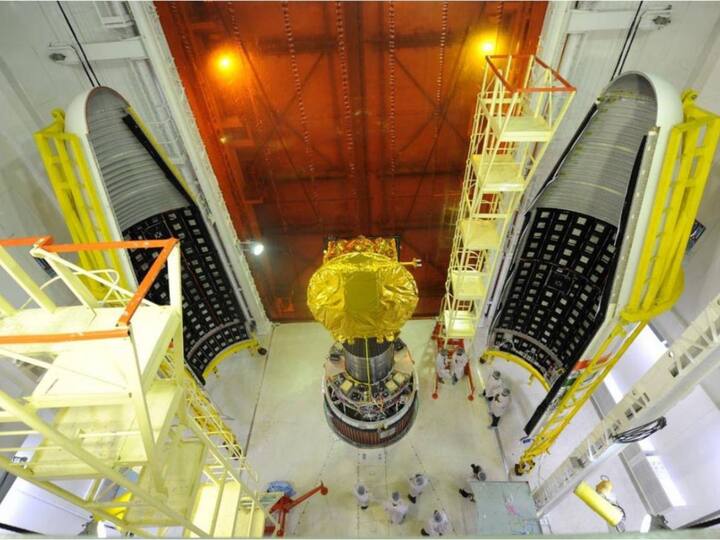
The Mars Orbiter Mission (MOM) is India's first interplanetary mission. Also known as Mangalyaan, the space probe was launched on November 5, 2013. Mangalyaan has been orbiting Mars since September 24, 2014. The mission made India the first Asian nation to reach Martian orbit, and the first nation in the world to do so on its maiden attempt. Mangalyaan carried out observations of the physical features of the Red Planet. The primary objective of the mission is to develop the technologies required for designing and planning operations of an interplanetary mission. (Image: ISRO)
26/27
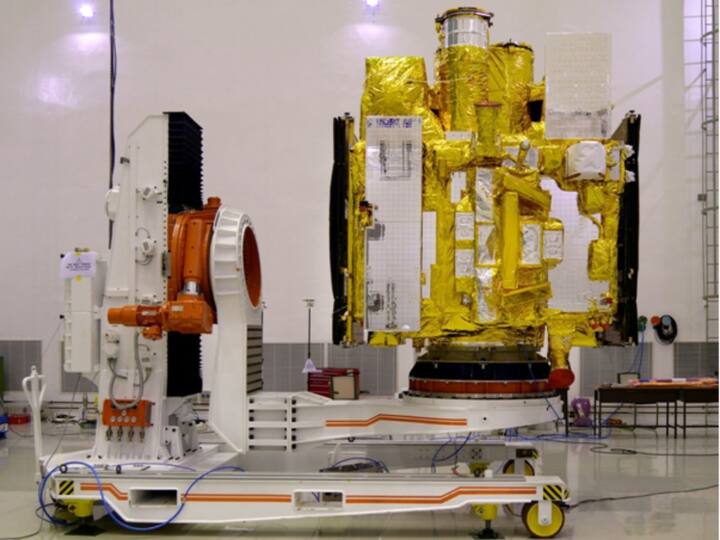
ASTROSAT is the first Indian satellite fully dedicated to the study of astronomy. It is the space telescope of India, and was launched on September 28, 2015. It is India's first space observatory mission. Its scientific objectives include understanding high energy processes in binary star systems containing neutron stars and black holes, estimating the magnetic field of neutron stars, study star birth regions and high energy processes in stars systems lying beyond the Milky Way, detecting new X-ray sources in the sky, and performing a limited deep field survey of the universe in the ultraviolet region. (ISRO)
27/27
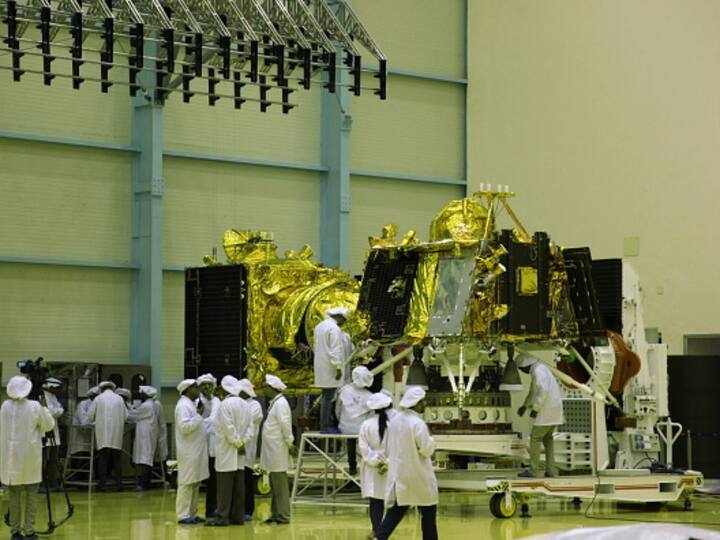
Chandrayaan-2 launched on July 22, 2019. The spacecraft consisted of an orbiter, a lander, and a rover. While the lander, called Vikram, failed to make the desired smooth landing, the other aspects of the mission were successful. (Image: Getty)
Published at : 20 Sep 2022 03:28 PM (IST)
View More
Advertisement
Trending News
Advertisement
Advertisement
Top Headlines
Election 2025
Election 2025
India
India
Advertisement









